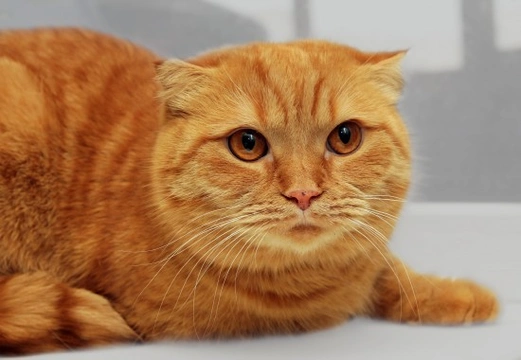
All about the Scottish Fold cat
The Scottish Fold (also sometimes called the Highland Fold, Coupari or Longhair Fold, depending on the coat variety) is an unusual and undeniably appealing cat breed with distinctive folded over ears. However, despite their good looks and appealing personalities, the Scottish Fold is also surrounded by some controversy, which has led various feline registries and governing bodies including the UK’s GCCF (Governing Council of the Cat Fancy) to reject registering and recognising the Scottish Fold as a breed in its own right.
While the breed undoubtedly has its fans and followers and there is a significant amount of demand for Scottish Fold cats, and for good reason, the Scottish Fold also inherits a range of potentially problematic health issues along with their folded ears, which mean that the question of Scottish Fold ownership and breeding is by no means cut and dried.
Read on to learn more about this appealing, friendly cat and the traits of the breed, plus why there is such a large question mark over their ongoing viability as pets.
What causes the unusual ear appearance?
The curled over or folded appearance of the Scottish Fold’s ears comes about due to a naturally occurring genetic mutation, which is dominant and passed on easily to subsequent offspring. The gene mutation causes the cartilage that supports the ear to possess a fold, leading to the ears bending forwards towards the face rather than standing upright as is the case for other cats. This gives the Scottish Fold its distinctively cute and some might say, owl-like appearance.
Not all cats of the breed will possess the folded-over ears, but as the mutation that causes it is dominant, a significant number of cats of the breed will display the folded over ears.
The traits of the Scottish Fold
Scottish Fold kittens are not born with folded over ears, but regular looking ears like those that other kittens have. The ears begin to fold over when the kittens are around three weeks old, although not all cats of the breed or every kitten in the litter will necessarily develop the folded over ears. Scottish Fold cats that retain the normal ear appearance are known as “straights.” While the first cats of the breed were born with just one fold in the ear cartilage, selective breeding to produce the fold and increase the degree of the fold has led to double and even triple folds to be present within the ears of some cats. This causes the ears to lie flat against the head rather than simply appear curled or folded over.
The Scottish Fold can be either longhaired or shorthaired, and is available in a wide variety of coat colours and patterns. They are medium sized, usually a little stocky or “cobby,” and overall have a very rounded and curvy appearance to the head and body.
They are also renowned for their unusual sleeping and sitting positions, usually sleeping on their backs and sometimes sitting up in an unusual pose known as the “Buddha” position, with the back legs splayed out in front of them and their front paws on their bellies.
Are there any health problems associated with the breed?
Unfortunately, the same gene mutation that leads to the curled over ears also carries a spectrum of undesirable side effects as well. The gene mutation that affects the ear cartilage of the breed may also lead to issues with the cartilage and bone structure in other parts of the body. This can lead to deformities of the spine, hind legs and tail that can have a significant affect upon mobility and also lead to a generally poor standard of living and a lot of pain.
The wax build-up within the ears of the Scottish Fold can also prove problematic, as the folding ear leads to the ear canal being blocked off, and unable to shed ear wax in the usual manner. Problems of the ear such as excessive wax build up, ear mites and infections can be exponentially more challenging to treat in cats with folded ears as well.
Popularity and mainstream acceptance of the breed
The Governing Council of the Cat Fancy (GCCF) recognised and registered the breed in 1966, and a breeding programme to increase the numbers of cats of the breed quickly ensued. However, the GCCF retracted the registration of the breed in 1971, due to the incidence of tail and limb deformities in a significant enough number of cats of the breed for the GCCF to conclude that the genetic mutation causing the ear fold was undesirable and risky.
Nevertheless, the Scottish Fold has established itself as a popular and desirable breed of cat, albeit one that is not formally accepted by the GCCF, and significant numbers of Scottish Fold cats are kept as pets and bred in perpetuity year on year.
The distinctive, appealing appearance of the breed, plus their kind temperaments and reputations as friendly, easygoing family pets has ensured that the Scottish Fold is highly sought-after, with kittens of the breed often changing hands for significantly more money than that of other pedigree breeds of cat.
If you are considering buying or adopting a Scottish Fold, you should carefully consider the potential for inherited health problems that accompany the breed, and find out as much as you can about the lineage and ancestry of any cat or kitten you are considering buying.
You can find Scottish Fold cats for sale and Scottish Fold cats for adoption from private sellers and breeders here on Pets4Homes.



